Fernieness Range
27th April 1943
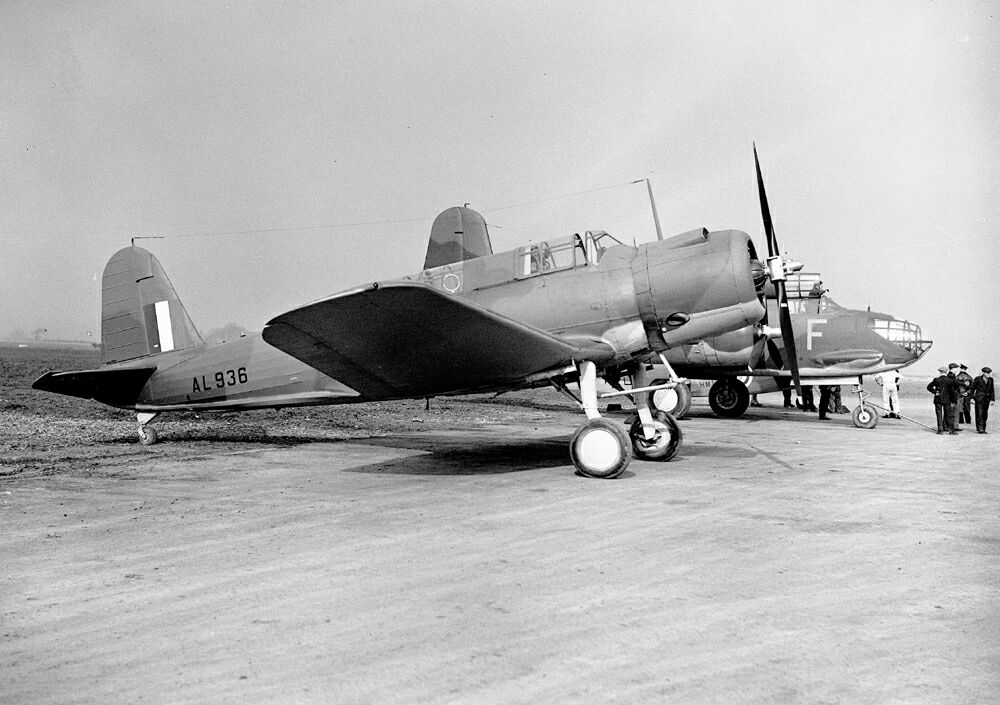
Chesapeake AL936 a sister ship to AL938
Fernieness (Ferny Ness) Chesapeake AL938
On the afternoon of the 27th of April 1943 Vought Sikorsky Chesapeake serial number AL938 took off from HMS Jackdaw, RNAS Crail, for what would become its last ever flight. The crew that day were Acting or Temporary Sub-Lieutenant Kenneth Joll as the Pilot and Acting Leading Airman Robert Hartley as Air Gunner/Telegraphist, both with 770 Naval Air Squadron.
AL938 was the only aircraft to take off from Crail that day as they were having a simulated German parachute attack and all aircraft were grounded. This account is as reported by Bill Prentice who was with 770 Squadron as an Air Mechanic and had worked on this very aircraft.
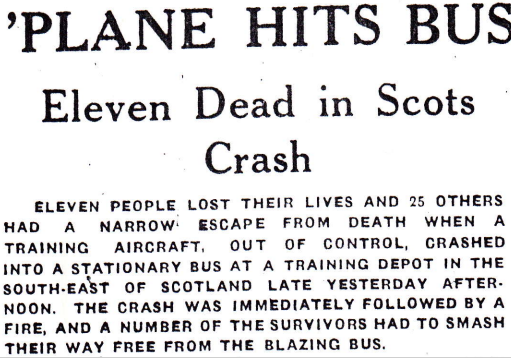
Newspaper clip from 1943.
About the Chesapeake aircraft
This was an American built dive bomber aircraft for a French order but because of the Nazi offensive in Europe and the invasion of France these aircraft were diverted to Great Britain instead. The American designation being the SB2U Vindicator. These aircraft made their way into various Naval Air Squadrons (NAS) and were used mostly for training due to their already obsolete nature.
Apart from the accident the only other period of note in our aircrafts story is that she took part in carbon monoxide trials on the 19th of June 1942 at Crail. On this date the flying hours on the aircraft were 39. The result of the trials indicated that carbon monoxide levels did exceed the safe flying levels during some of the flying patterns flown but not all. The result being a recommendation to send the aircraft for week long trials at RAE Farnborough to investigate the entry points of the carbon monoxide into the cockpit. As of now I do not know if these further trials ever took place with this aircraft.
Fernieness (Ferny Ness)
AL938 and her crew flew over to East Lothian (Haddingtonshire) where the Fernieness Gunnery Range was located. Ferny Ness is the name for the area today but the records state that the range was Fernieness. For what reason perhaps we will never know. Once there the duties, again from the records, were to provide practice dive bombing for the DEMS (Defence Equipped Merchant Ship) ratings that were on the range that day. Ferniness was, and the remnants still are, on a promontory that is now Longniddry Bents No. 3 car park. There were emplacements for various guns as well as a couple of sheds for storing equipment.

Ferny Ness Today © Google Earth.
The records for the accident state that AL938 was on a dive bombing exercise for the DEMS ratings, but it is widely believed and stated that they had been a target tug pulling a drogue target for gunnery practice that day. AL938 would have made her way to RAF Drem to drop the target drogue and refuel before returning to the range to complete the course. It was at the end of the day at around 3.50 pm that catastrophe struck.
All the personnel had finished for the day and had started boarding the buses that were to take them to their units. There were two full buses already waiting on the road for the return journey and boarding was almost complete on the third. The ratings were making their way onto the bus, some already seated with some still outside presumably finishing their cigarettes or just talking. The driver had his engine running ready to pull away and then AL938 was seen by witnesses to complete two dive bombing passes. It was on a third that an engine note change was heard and the aircraft sunk from view beneath the trees. That was the last time anyone saw this aircraft in one piece.
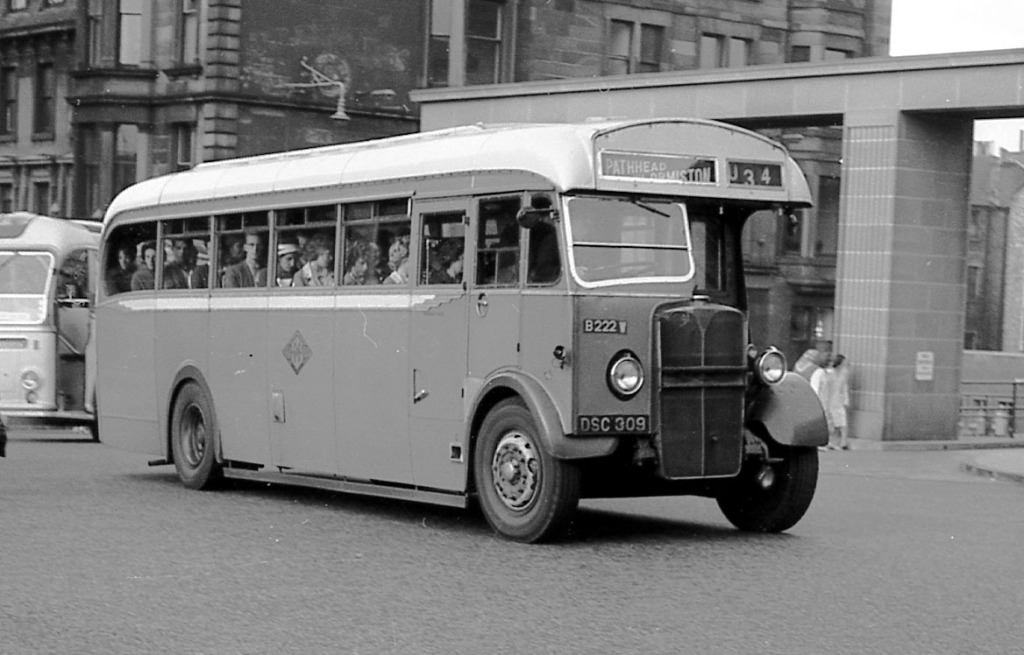
SMT AEC Regal DSC 309 with passengers showing seating arrangement.
What happened next would remain with people for the rest of their lives, my own father included, he was a young boy playing with his sister on the golf course at the time and saw the fire that was raging and the smoke which would be visible for miles. The aircraft had come down right in front of the bus, presumably without enough height to recover, hit the ground and bounced ploughing right the way through the bus while breaking into hundreds of pieces. The wreckage was thrown all over the range with estimates of 100 to 400 yards of spread. It is known that the engine of the Chesapeake, a Pratt and Whitney Twin Wasp Junior serial number 2853/281563, was flung as far as the Gosford Saw Mill entrance on the main road so in actual fact more like 1000 yards away. My father arrived and sat on a wall nearby and watched what was going on until a policeman arrived and chased them away. Not something young children should see or witness and they did as he said.
Mr Bryleck, a Polish soldier working at the nearby Gosford Camp was working on a motorbike at the time of the crash and remembers the aircrafts dives and then nothing but silence and lots of black smoke. He made his way to the gunnery range only to find the bus ablaze and no apparent sign of the aircraft which of course was in hundreds of pieces. The bus engine was revving hard and he could see burning and charred bodies lying around on the ground. He tried to help men and move them to safety but he was told to do nothing as he may injure them further if they were so badly burned. Human skin will peel straight of the body if that badly burned. He had asked what had happened and he was told the aircraft’s wing had hit the equipment shed as it had passed low and the wing had been torn off. How likely this is we don’t know but there were sheds there and in the area of the crash and at least one of them was ablaze according to witness accounts. Certainly, this could have caused the accident and resulted in the aircraft bouncing through the bus.
The aftermath has drawn similarities from one witness of the crash to his experiences at Arras during the First World War. While another female fire fighter who attended the scene woke with nightmares for most of her life. But they just had to get on with the work and do the best they could.
There were bits and pieces of bus, bodies and aircraft scattered over the whole scene. The description on the death entries as to the cause of death for most of the victims was “Accidental burns and multiple injuries (Aeroplane accident) Examined after death and cert by Sydney Catterall. Surgeon Lieutenant RNVR Royal Naval Sick Quarters Granton.” Only a few say anything different and are much more graphic. They exist in the records for anyone who might wish to further understand this great tragedy.
The casualties were as follows:
Chesapeake AL938
Kenneth Roy Joll aged 20 Acting Temporary Sub Lieutenant 770 NAS HMS Jackdaw RNAS Crail Service Number not known Buried Abington (SS Peter & Paul) Churchyard (Pilot)
Robert Hartley aged 20 Acting Leading Airmen 770 NAS HMS Jackdaw RNAS Crail FX86655 buried Hull Northern Cemetery (Air Gunner/Telegraphist)
SMT AEC Regal Omnibus
David Mathieson aged 43 Civilian Bus Driver SMT AEC Regal DSC312 19 Dean Park Street Edinburgh buried Pencaitland Cemetery
Ferniness Range
Leslie John Dodson aged 23 Able Seaman HMS Fernieness Range P/JX289242 buried Gosport Anns Hill Cemetery
Patrick Keenan aged 28 Able Seaman HMS Fernieness Range P/C/DX2230 buried Edinburgh Seafield Cemetery
Alexander Rudd aged 20 Able Seaman HMS Fernieness Range P/JX334136 buried Frizington (St Paul) Churchyard
William Gibson aged 28 Able Seaman HMS Fernieness Range P/JX261576 buried Kinghorn Cemetery
HMS President III
David Brookes aged 20 Able Seaman HMS President III D/JX338095 buried Edinburgh Seafield Cemetery
Patrick Curran aged 30 Able Seaman HMS President III D/JX337908 buried Edinburgh Seafield Cemetery
Walter Laverack aged 28 Able Seaman HMS President III C/JX262492 buried Rawcliffe Cemetery
Ernest George Carr aged 23 Able Seaman HMS President III P/JX201363 buried Edinburgh Seafield Cemetery
John Macleod aged 30 Able Seaman HMS President III C/JX289681 buried Edinburgh Seafield Cemetery
Ernest Beswick aged 25 Able Seaman HMS President III C/JX223520 buried Edinburgh Seafield Cemetery
SS Rother (Goole) 128883
George Alan Osborn aged 37 Able Seaman Merchant Navy SS Rother (Goole) number not known buried Goole Cemetery
Stephen Thacker aged 23 Greaser Merchant Navy SS Rother (Goole) number not known buried Sutton in Ashfield Cemetery
SS James Whitcomb Riley
Louis Hiram Carpenter aged 20 Ordinary Seaman US Merchant Marine SS James Whitcomb Riley Z-236345-D1 Buried Wahjamega Cemtery Caro Michigan
Those injured in the accident that survived are listed below. There may be others but these are the names that are known.
Injured and attended The Astley Ainslie Institute Edinburgh
Simon Kennedy Able Seaman C/JX266475 DEMS
William Lawson Able Seaman P/JX291521 DEMS
James Bates Colour Sergeant DEMS Instructor PO/20286
Those present at the scene in various capacities were:
PC Alex S MacKay, Peter C Leslie Civil Defence Training Officer, Mr Bryleck, Barnet Ross McIntosh, Ellen McIntosh, Sergeant Herbert Ronald Constable Royal Marines and Margaret Knowles Murdoch Begbie National Fire Service. Mention should also be given to Bill Prentice 770 NAS HMS Jackdaw as his recollections have proven invaluable.
Again, there will have been a lot more people there but these are the people I know about or have met.
The majority of the those who died did so on the 27th of April 1943 with the exception of William Gibson who died on the 30th of April 1943 from his injuries (extensive burns), and also George Alan Osborn who died on the 28th of April 1943 surviving only overnight.
Louis Hiram Carpenter US Merchant Marine
Until very recently (2023) I had very little information on Louis Hiram Carpenter, sometimes his name is spelled Lewis in the records but it is actually Louis. I did find this story online which seems to be from a relative and it reads like this:
Robert Martin Carpenter related this story of Louis Hiram Carpenter.
“A Hero. As a young man, he was a brawler who would fight for money on the weekends, picking on larger but less accomplished fighters and letting his smaller size influence the betting. He lied about his age to join the Merchant Marine during WWII and he served as a gunner. He made three crossings of the Atlantic in convoys. His ship was sunk on his first crossing and he was rescued from the open sea. On his second crossing, his ship was again torpedoed and he was again rescued from the open sea. His third crossing was completed without a sinking. After his third crossing, he was stationed in Edinburgh awaiting return to the U.S. While at this base, he was required to participate in gunnery practice. On the way to practice, an allied airplane crashed into the bus carrying Louis and 15 of his comrades. All 16 men on board the bus, including Louis, were killed. While highly unusual for men serving overseas during the war, his body was returned to Michigan and he is buried at Wahjamega. His stone reads:
Louis Hiram Carpenter, Son of William and Luella, Sailor of U.S. Merchant Marine, Killed in Action, in Edinburgh Scotland, 1923 – 1943.”

Louis Hiram Carpenter’s grave stone in Michigan.
In fact, we know that Louis was finished for the day and on his way back to his room for the night as were all the men. Perhaps, unusual for the body to be returned home to Michigan but that didn’t happen overnight. A new report that has just come to light has allowed a glimpse of how this repatriation came about. Louis was killed on the 27th April 1943 and buried on the 1st of May 1943 at Seafield Cemetery in Edinburgh, very close to the Port of Leith. He was then moved and reinterred in the American Cemetery at Cambridge on the 20th of January 1947. At some point in the coming months the US government wrote letters to relatives informing them that money had been made available for the repatriation of their relatives should they so wish. Louis’s father William Carpenter opted for this route but still had to pay the sum of $77 dollars of his own money for the service. Louis was finally buried in Wahjamega Cemetery in Michigan on the 20th of July 1948. I am awaiting his service records from the US Archives and as soon as I get them, I will update this page. His ship beyond doubt was the SS James Whitcomb Riley whose Captain Robert N Finlay had identified the deceased and taken his belongings from ship and shore back to the American Shipping Administration who would have given them back to the family. The Edinburgh firm McKenzie and Miller (Undertakers) from Great Junction Street in Leith took care of Louis when he was buried in Seafield Cemetery. They are still there to this day. Louis joined the SS James Whitcomb Riley in New York 30th of January 1943 sailing on the 18th of February for Belfast arriving on the 5th of March eventually arriving in Methil on the 4th of April. It was from here that the SS James Whitcomb Riley left on the 4th of May back to New York without Louis Hiram Carpenter.
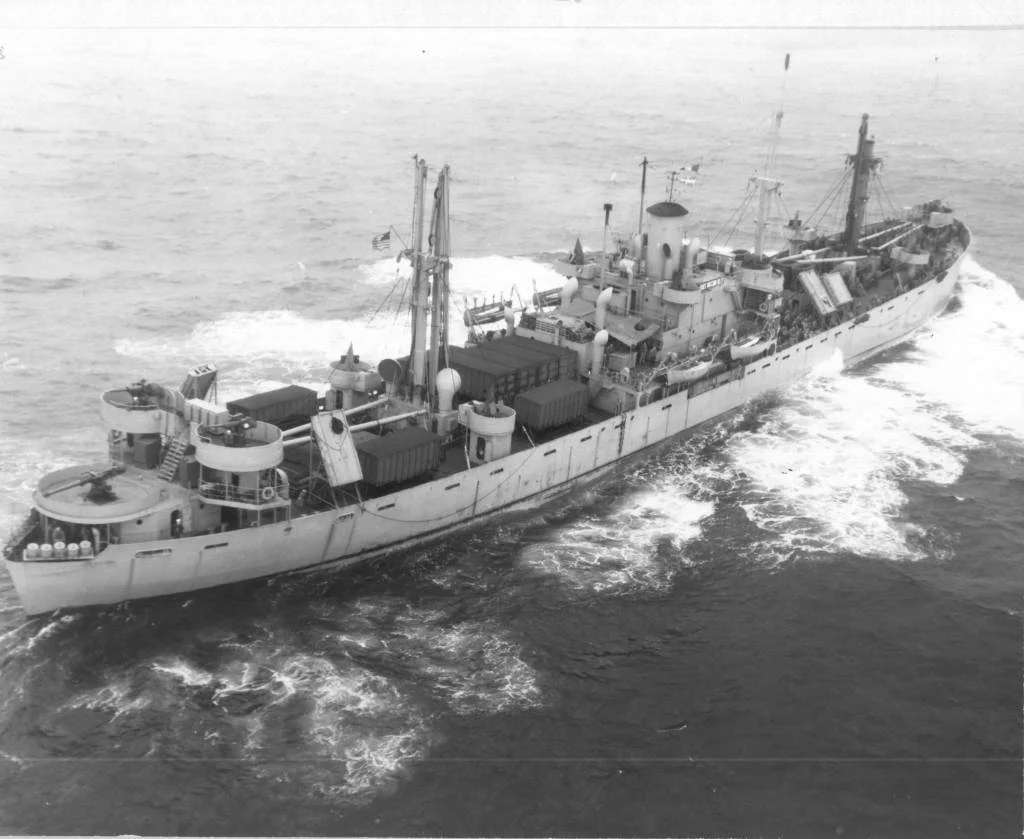
SS James Whitcomb Riley.
Showing the defences Louis would man during his voyage.
SS Rother, Osborn & Thacker
George Alan Osborn and Stephen Thacker were both serving aboard the SS Rother registered at Goole. There has been some uncertainty of their involvement in this accident and which ship they were serving. Having looked at the Death at Sea Register it states that both men were aboard the SS Rother and that they had been attending Gunnery practice ashore. Further to this the record of the SS Rother’s voyage has her leaving Leith for an onward voyage on the 5th of May 1943 placing her firmly in the area and crew available shore training. The SS Rother herself was owned and operated at the time by the London Midland Scottish Railway.
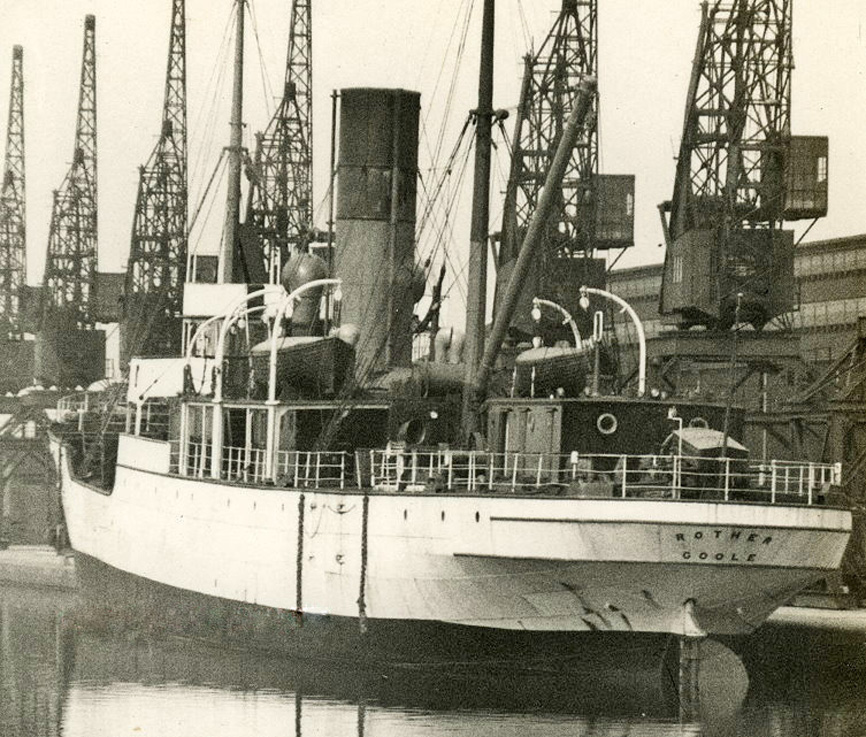
SS Rother.
SMT Omnibus Driver David Mathieson
David Mathieson was the driver for the fateful bus on the 27th of April 1943. He worked for SMT (Scottish Motor Traction Co). His bus for that day was an AEC Regal registration DSC312. This detail was thought to be lost and proof that this was the bus in short supply, but through the Court of Inquiry hearing that was held on the 10th July 1943 returning its findings and establishing a cause of death for David, which was then entered on the Corrected Entry of Death Register which gives some details of the death including the bus registration. It has been said that he was a Tranent man with his parents residing at New Winton. His address at the time of the accident is given as Dean Park Street, Edinburgh. I traced his grave some years ago and he is buried in Pencaitland Cemetery.
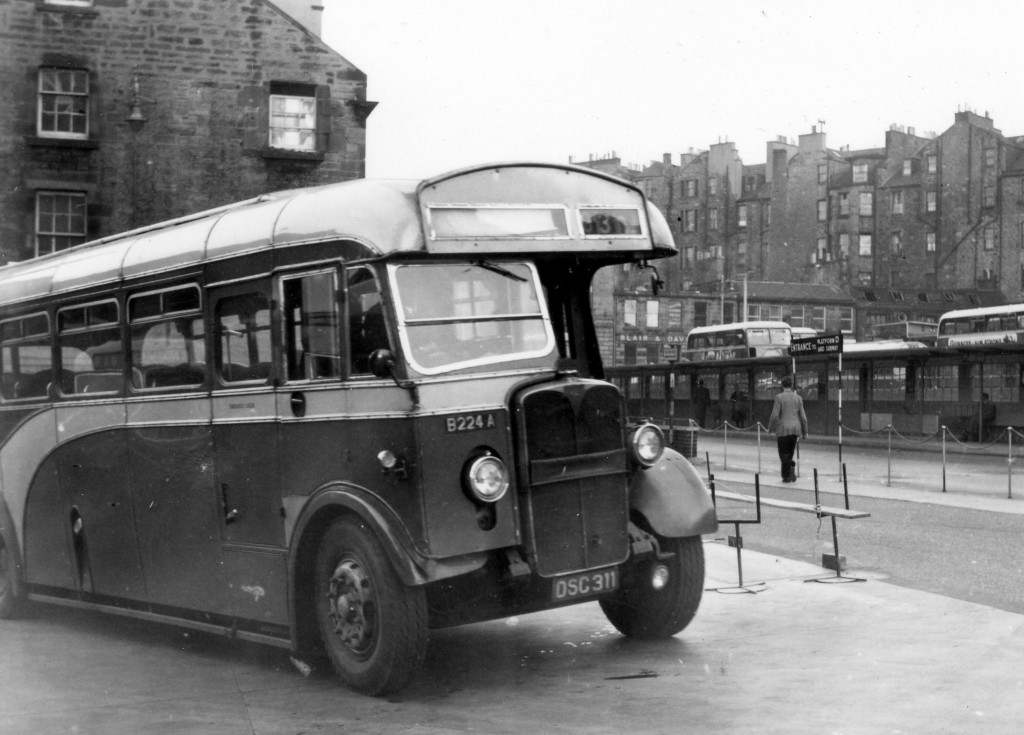
SMT AEC Regal DSC311 the sister bus to the Ferny Ness bus.
The Ferny Ness Accident Memorial
There is a memorial plate the Ferny Ness Accident outside of The Royal British Legion in Longniddry, some way away from the accident site. It mentions thirteen people who lost their lives. This memorial was the result of years of research and planning by Mr Robert Cunningham of Longniddry with the assistance of John Home Robertson MP for East Lothian at the time, The Earl of Weymss and March, The Embassy of The United States of America London, Commonwealth War Grave Commission and The Public Records Office. The memorial mentions no names of the dead which I always thought was strange. We know now that sixteen people died that day so there are three people not known to the researcher at the time, and the general feeling of the parties involved was that they couldn’t possibly name anyone while there was still doubt about the number of people involved and one other reason. Please read below.
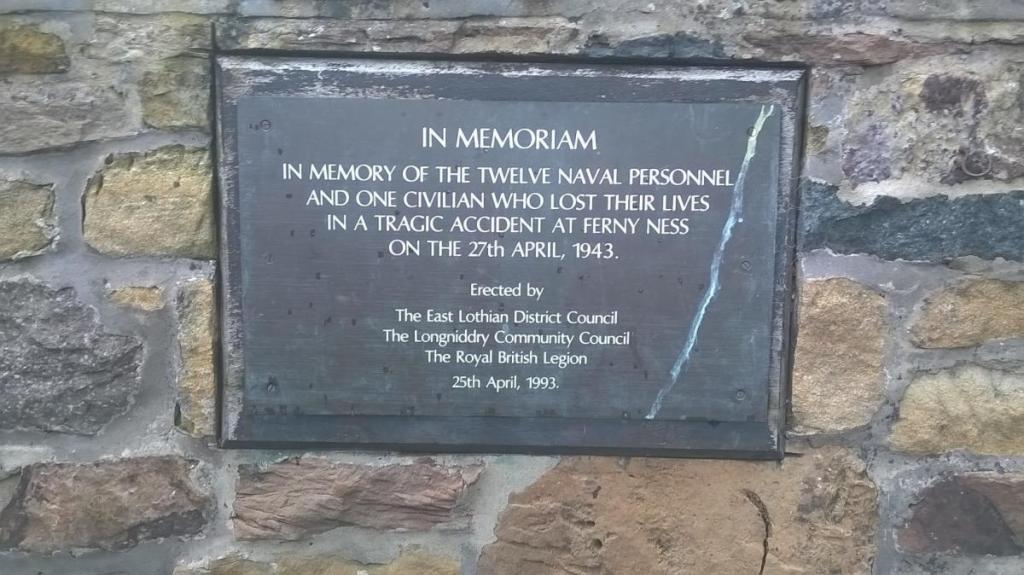
The memorial outside the Royal British Legion Longniddry.
The strange case of the survivor I W Laverack
As shown above the memorial did not have any names because the number of people killed didn’t add up to what the reports said at the time, but in a newspaper clipping in 1968 there was a letter sent in saying that the accident had been brought back to the persons memory by an article on the same paper about the accident in a previous edition. The person said he had received extensive burns in this accident and survived. He also thanked the nurses at the Astley Ainsley hospital for saving his life, signing off as I W Laverack of MV Melrose Abbey. There was a man named Walter Laverack who was listed as killed and he is buried in Rawcliffe Cemetery. You can now imagine the predicament this put the researcher in as to the names on the memorial. It was ultimately this news that meant names could not be added to the memorial. Currently I am in discussion with The Merchant Navy Forum trying to find a crew list for the MV Melrose Abbey to see if we can find any trace of this person. It’s a bit of a mystery that needs solving. Either it’s a case of mistaken identity at the time of the accident and that means another man is missing a name somewhere, or could it be some sort of prank? While this can’t be ruled out, I would like to try and prove the case. Since my father told me of this accident, I have always wanted to put a memorial at the site and tell the story of the men who died there as well as putting their names on it so that they are always remembered and talked about. Is this just a case of mistaken identity, what could a person gain from claiming to be someone they are not, or could there have been two people called Laverack on the same course?
770 Naval Air Squadron
A brief overview of 770 Naval Air Squadron.
Formed on 7/11/39 at Lee on Solent and disbanded 1/5/1940 Reformed 1/1/41 at Donibristle. Stationed at Crail 1/6/1941 until 29/1/44 and moved to Dunino. Aircraft used Roc, Skua, Chesapeake, Defiant and Martinet.
Acknowledgments:
I would like to thank the following for all their help in trying to research and understand this tragic accident. Some are no longer with us.
Barnet Ross McIntosh (My Dad) Jack Tully-Jackson, Mr T Bryleck, Bill Prentice, Bryce Brown, Craig Statham, Graham Martin-Bates and of course Kenny Walker, Jim Corbett and all my other fellow researchers.
Websites and Organisation that made this research possible:
Fleet Air Arm Museum, British Merchant Navy Forum, RAF Commands Forum, Flypast Forum, Commonwealth War Graves Commission, East Lothian At War, John Gray Centre, US National Archives (St Louis) and The Scottish Vintage Bus Museum Archive.
Finally thanks to anyone I may have missed.

Leave a comment